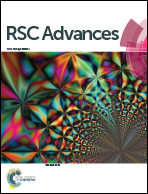Coupled effects of hydrophobic layer and vibration on thermal efficiency of two-phase closed thermosyphons
Abstract
Condensed droplets in a two-phase closed thermosyphon (TPCT) are subject to two competing forces: contact line pinning force between the droplet and the wall of the TPCT and the body force due to gravity. Either reducing the contact line pinning force or increasing the body force can lead to significant enhancement in the heat transport capability. This study aims to scrutinize the coupled effects of hydrophobic surface coating at the condenser wall and high-acceleration induced vibration on the thermal efficiency of a TPCT. We explore an approach to reduce the contact line pinning force by applying a thin layer of hydrophobic coating, which also facilitates dropwise condensation to further increase the heat transport capability. The body force of the condensed droplets can be increased by introducing a low-frequency (f ∼ 102 Hz) high-acceleration (![[greek xi with two dots above]](https://www.rsc.org/images/entities/i_char_e1ae.gif) ∼ 103 m s−2) vibration. The formation of elongated liquid jets and entrainment of droplets induced by the high-acceleration vibration counteracts the enhancing effect from the increased body force of condensed droplets. Nanofluid with distinguished thermo-physical properties is charged to the TPCT to further enhance the thermal efficiency. By incorporating the coupled effects of hydrophobic layer and vibration, we can obtain a maximum augmentation in the heat transfer coefficient exceeding 47.7%. The factors contributing to the enhancement of thermal efficiency of a TPCT are identified and the underlying physical significance of the coupled effects is delineated.
∼ 103 m s−2) vibration. The formation of elongated liquid jets and entrainment of droplets induced by the high-acceleration vibration counteracts the enhancing effect from the increased body force of condensed droplets. Nanofluid with distinguished thermo-physical properties is charged to the TPCT to further enhance the thermal efficiency. By incorporating the coupled effects of hydrophobic layer and vibration, we can obtain a maximum augmentation in the heat transfer coefficient exceeding 47.7%. The factors contributing to the enhancement of thermal efficiency of a TPCT are identified and the underlying physical significance of the coupled effects is delineated.


 Please wait while we load your content...
Please wait while we load your content...